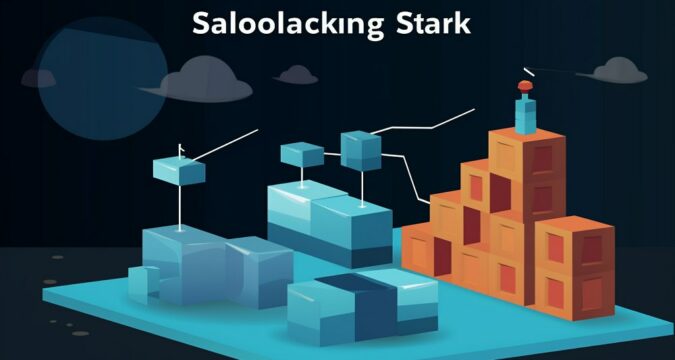
Block Size Explained
Block size is the volume of data handled within a computer or storage system in a single block. It is the fundamental data storage and retrieval component within file systems and storage configurations.
Smaller block sizes optimize storage capacity by reducing unused space within each block and preventing wasted storage. Larger block sizes, on the other hand, can improve data transmission rates, particularly with large files, by reducing the handling overhead associated with managing numerous smaller blocks.
The efficiency and architecture of a blockchain network are shaped by its block size in the blockchain technology landscape. A blockchain’s blocks contain a set of transactions, and the size of the block determines how many transactions it can hold.
This aspect is critical for a variety of reasons. For a start, the performance of a blockchain network directly relates to the size of its blocks.
Larger block sizes can increase transaction throughput by allowing more transactions to be processed concurrently. However, they have drawbacks, such as increased resource demands for network users and extended validation periods.
However, smaller block sizes stimulate decentralization by making it easier for nodes to join the network, thus lowering the resources required for blockchain participation. Therefore, finding the optimal block size has become a hot topic in the blockchain community as developers strive to balance security, decentralization, and scalability when developing blockchain protocols.
Scalability In Blockchain And Its Importance
The scalability of a blockchain ensures its responsiveness and ability to handle increasing workloads as more users join the network and demand for transaction processing increases. Thus, blockchain networks may experience bottlenecks, longer transaction confirmation times, and higher fees without scalability.
This limitation may limit their application in several contexts, like supply chain management and financial transactions. As a result, scalability is critical to blockchain systems’ long-term viability to accommodate a growing global user base.
Addressing scalability issues requires layer-2 (L2) solutions. These solutions function above existing blockchains to reduce congestion and increase transaction throughput.
L2 protocols, like state channels and sidechains, reduce the load on the primary blockchain by offloading certain operations, allowing for faster finality and more cost-effective transactions. These scalability improvements are significant in the case of heavily used platforms like Ethereum, which are plagued by congestion and high gas prices.
In addition, L2 solutions pave the way for improved functionality and broader adoption of blockchain technology across a wide range of decentralized applications (DApps).
Interactions Between Block Size And Scalability
Larger blocks necessitate more bandwidth and storage capacity, posing network resource challenges. While increasing block sizes can improve transaction performance, it can also lead to centralization because only nodes with sufficient resources can handle the increased data load.
Another alternative solution is sharding, which was pioneered by the Ethereum blockchain. Sharding entails segmenting the network into more minor, more manageable data sets known as shards.
In contrast to a linear scaling model, each shard operates independently, managing its smart contracts and transactions. This approach improves scalability by distributing the workload across multiple shards.
Sharding introduces a decentralized transaction processing approach, reducing reliance on individual node performance and fostering a more distributed and efficient architecture. The traditional block size is no longer the sole determinant of scalability in this model.
Scalability in sharding is not solely dependent on a single block size. It thrives on the combined throughput of multiple parallel shards.
Each shard adds to the network’s total transaction processing capacity by allowing simultaneous execution. This cooperative effort among shards enhances the network’s ability to handle increased transaction volumes.
How To Find An Optimal Block Size For A Blockchain
One approach is to use adaptive block size algorithms that adjust dynamically based on network conditions. By automatically modifying block sizes, these algorithms can expand during periods of high demand (optimizing resource utilization) and contract during periods of low activity (ensuring efficient resource use).
Continued research and development are critical in exploring innovative solutions such as layer-2 scaling techniques like Ethereum’s state channels or Bitcoin’s Lightning Network. These off-chain methods offer viable solutions to scalability issues without jeopardizing decentralization.
They effectively lessen congestion without inundating the core blockchain with unnecessary data by facilitating a high volume of transactions of the primary blockchain.
Ending Thoughts
Collectively, decentralized governance models allow users to decide on protocol updates, such as block size adjustments. Furthermore, data-driven analysis and continuous monitoring are critical.
Blockchain networks can fine-tune block size parameters by leveraging user feedback and real-time performance indicators. This iterative approach enables rapid adaptations to changing user demands and technological advancements.




